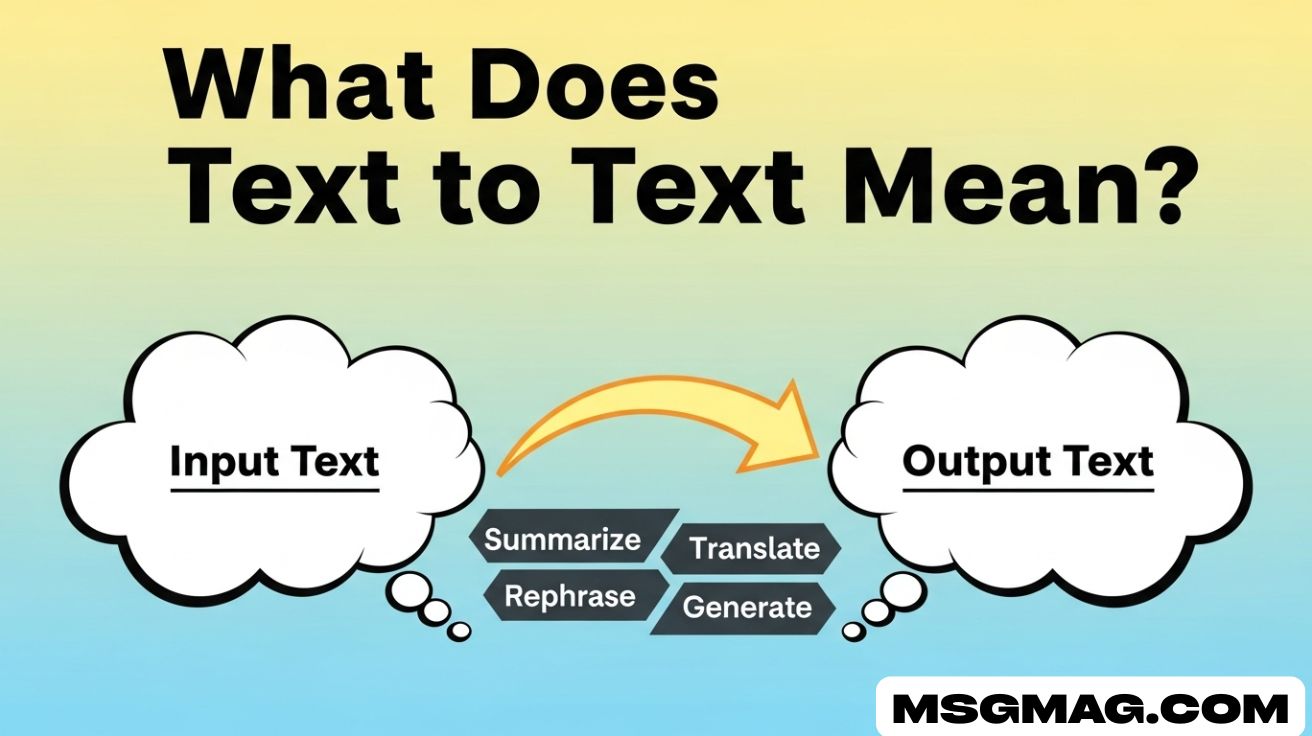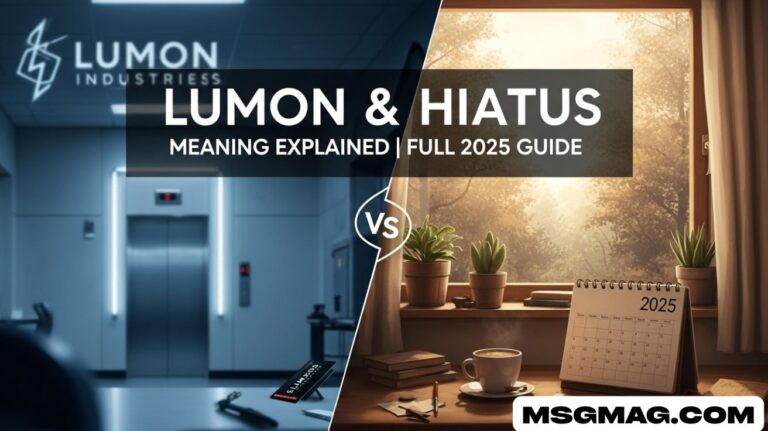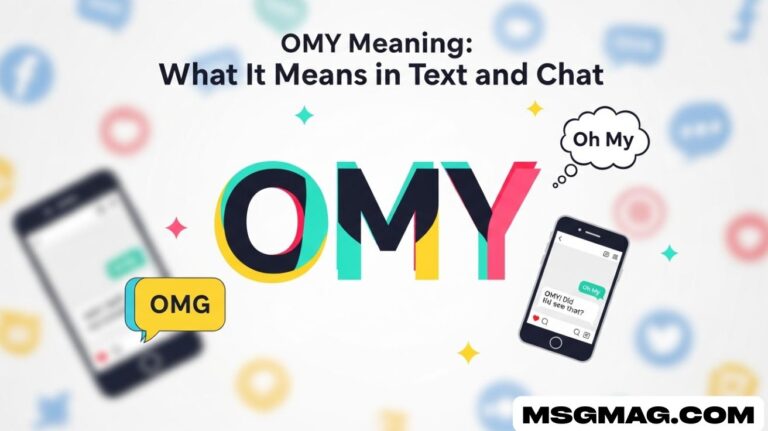What Does Text to Text Mean? A Simple Guide for Students
Text to text meaning is the idea of connecting one text to another. It helps readers compare stories, ideas, or information. This skill makes reading more meaningful and easier to understand.
Have you ever read a book and thought of another story? Or seen a movie that reminded you of a book? These connections make reading fun and interesting.
Text to text meaning is used in school, social media, and movies. It helps people understand themes, characters, and plots. Learning this skill improves reading and thinking.
Definitions & Meaning
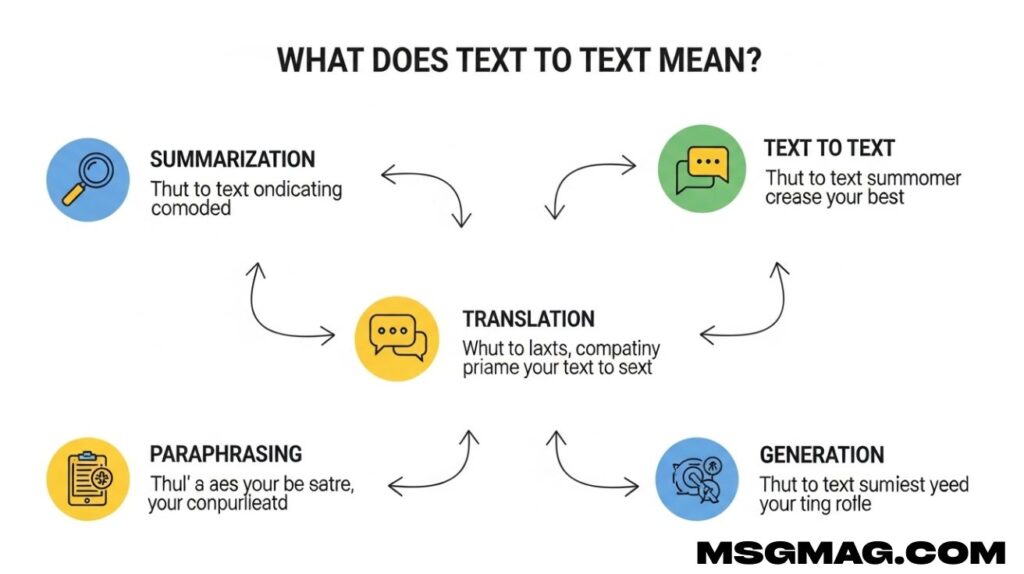
At its core, understanding text to text refers to recognizing and analyzing relationships between two pieces of content, whether they are books, articles, movies, or even tweets. Text-to-text analysis often involves comparing characters, plots, themes, or writing styles to gain deeper insight. For instance, a literature comparison might explore themes of courage in both Harry Potter and Percy Jackson, while comparative text analysis could examine how both series depict friendship and loyalty differently. There are several ways these connections appear, including text-to-self connections, where a text relates to your own experiences, and text-to-world connections, where a story reflects societal issues or historical events.
To make this idea clearer, here is a simple table of text-to-text examples:
| Text 1 | Text 2 | Connection Type | Example Description |
| The Handmaid’s Tale | 1984 | Thematic | Both explore oppression and authoritarian control |
| Beowulf | The Odyssey | Comparative | Heroic traits and epic journeys |
| TikTok Meme #1 | TikTok Meme #2 | Referential / Social Media | One meme references another to make a joke |
| School History Book | YouTube Documentary | Text-to-World / Educational | Comparing historical events and media representation |
By practicing text-to-text comprehension, students can draw connections that enhance their understanding of each text and provide richer insights into how ideas are communicated across time, media, and culture.
Origins & History
The concept of text to text meaning is not new. Its roots can be traced back to classical rhetoric and literary studies, where scholars compared works to uncover broader themes, societal critique, or stylistic techniques. In modern education, text-to-text in education became formalized as a strategy to improve reading comprehension and analytical thinking. This led to the development of frameworks including text-to-self connections, text-to-text connections, and text-to-world connections, which remain popular in classrooms across the United States. These strategies encourage students to engage actively with content, ask meaningful questions, and reflect on relationships between texts.
In the digital age, intertextuality has expanded beyond literature to include media, social platforms, and AI content. Students now engage in digital content analysis, recognizing links between videos, memes, news articles, and more. Whether through classroom exercises or online exploration, understanding the history of text to text analysis helps students appreciate how connections between texts have long been a method for developing insight and critical thought.
Usage in Different Contexts
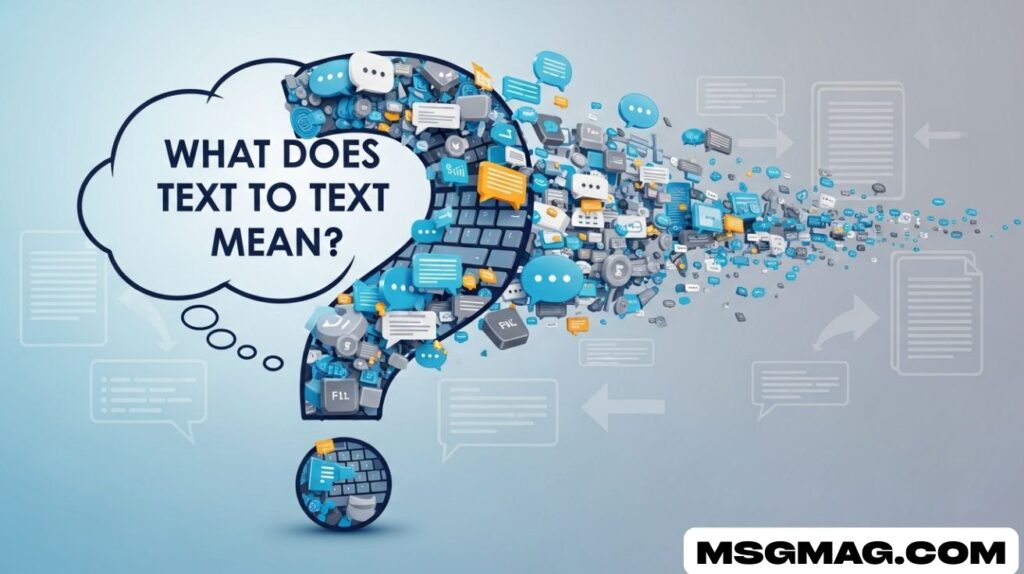
1. Educational Contexts
In schools, text-to-text in education is a fundamental tool for developing reading comprehension techniques. Teachers encourage students to compare characters, plots, and themes across multiple works, improving textual analysis skills and critical reading skills. For example, comparing Beowulf with The Odyssey or examining how two novels depict heroism and moral challenges allows students to engage in literature comparison and plot, theme, character comparison. Students also learn to apply educational reading strategies like summarizing, annotating, and noting connections, which deepen their understanding of both texts.
2. Social Media
Text-to-text in social media is everywhere. Memes, TikTok videos, Twitter threads, and Instagram posts often reference or respond to previous content, creating a chain of meaning that mirrors text-to-text connections in literature. For instance, a meme may reference a popular movie or viral clip, while another meme adds a humorous twist, creating inter-document connectivity in a digital format. This informal yet widespread practice enhances text-to-text comprehension and encourages users to interpret, remix, and respond creatively.
3. Professional Communication
In professional and academic environments, cross-referencing texts is essential. Lawyers, researchers, and business analysts engage in comparative text analysis when citing previous studies, legal cases, or reports. These text-to-text connections validate arguments, ensure consistency, and allow readers to follow the evolution of ideas. For example, a legal brief might analyze how one court case relates to a precedent, demonstrating text-to-text analysis in action outside a classroom.
4. Pop Culture
Pop culture is full of literary text connections and intertextuality. Movies, TV series, comic books, and novels frequently reference earlier works, often through easter eggs, homages, or story continuity. The Marvel Cinematic Universe, for example, rewards fans who notice text-to-text connections between different films, enriching the viewing experience. Similarly, fanfiction often blends multiple universes, illustrating the creative potential of making connections between texts across media.
5. Technology and AI
Modern technology relies heavily on AI text-to-text models. These models perform text-to-text analysis for tasks like summarization, translation, and question answering. When an AI system converts a long article into a concise summary, or translates a text into another language, it is effectively performing text-to-text comprehension on a computational level. This application shows that text-to-text connections are not just educational or cultural—they are integral to how we process information digitally.
Read Also : What Does TBD Mean in Text? The Real 2025 Meaning Explained
Common Misunderstandings & Clarifications
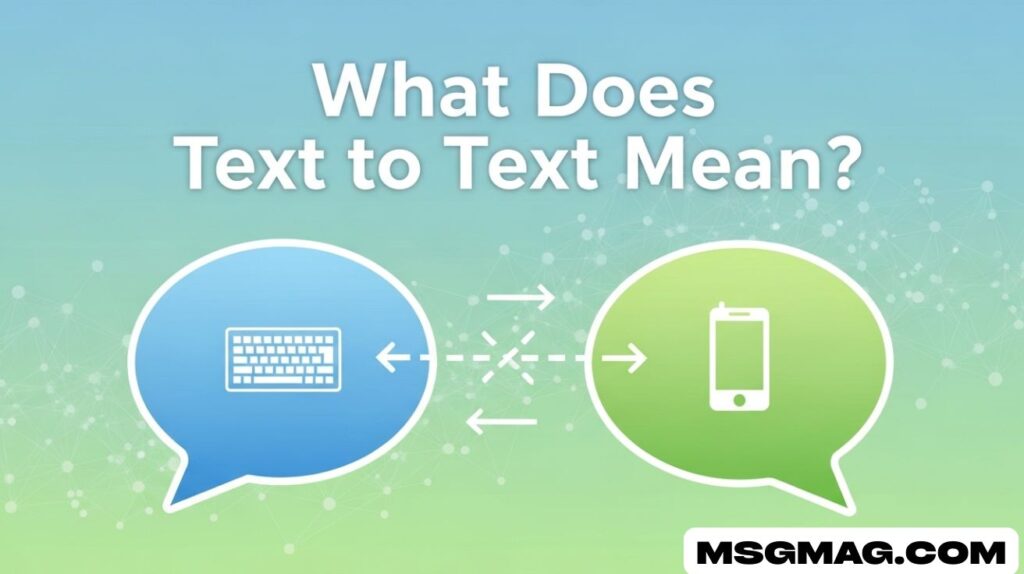
One common misunderstanding is that text to text meaning only applies to literature, when in fact it applies to any comparable content. People often assume that only novels or essays can be compared, but text-to-text connections can include tweets, YouTube videos, films, and other digital content. Another frequent confusion is thinking that these connections require identical formats. The reality is that a book can be compared to a song, a script, or even a meme, as long as a meaningful link exists.
It is also crucial to differentiate text-to-text analysis from plagiarism. Making text-to-text connections involves interpretation and commentary rather than copying, while plagiarism is taking another’s work without credit. Additionally, not all text-to-text connections highlight similarities; sometimes contrasting texts reveal important differences, offering deeper insight into themes, characters, or cultural messages.
Alternatives & Synonyms
While text to text meaning is widely used, several terms capture the same idea in different contexts. Intertextuality is common in literary theory, describing the relationship between texts and how they reference or echo one another. Cross-referencing texts is often used in academic or professional writing. Comparative text analysis emphasizes evaluating similarities and differences, while textual relation is a general term for any connection between texts.
In digital contexts, inter-document connectivity and textual echo are used to describe how content refers or responds to other materials. Each term reflects the core idea of recognizing and analyzing relationships between content for text-to-text comprehension.
Understanding Text-to-Text Connections in Literature
Text-to-text connections help students see relationships between stories, themes, and characters across different books. By comparing novels, short stories, or plays, readers develop text-to-text analysis skills that enhance comprehension and interpretation. Recognizing patterns in writing allows students to engage more deeply with content and discover hidden meanings in literature.
Making comparative text analysis is not only about noticing similarities; it also involves exploring differences. Understanding how authors approach themes like friendship, heroism, or conflict strengthens textual analysis skills. These connections build critical thinking and encourage reflective reading, helping students see literature as an interconnected web rather than isolated works.
Text-to-Text in Digital Media
In today’s digital world, text-to-text connections appear everywhere, from memes to online articles and social media posts. Students often compare content across platforms, building digital content analysis skills. Recognizing references and thematic echoes online enhances comprehension and creativity, making reading and interacting with digital media more meaningful.
Inter-document connectivity is also essential in professional and educational contexts. Students learn to trace sources, cite references, and understand how information evolves across documents. This ability to make connections digitally is crucial for both learning and future careers in media, journalism, and content creation.
The Role of Text-to-Text Analysis in Education
Teachers use text-to-text analysis to help students link ideas between texts, improving reading comprehension techniques. Comparing plots, characters, and themes across novels allows students to develop critical thinking and insight. Educational exercises that encourage these connections make reading more interactive and engaging.
Classroom activities often focus on text-to-self connections and text-to-world connections, helping learners relate texts to personal experiences and current events. These strategies foster deeper understanding and analytical skills, equipping students to recognize patterns in literature, history, and media for more thoughtful interpretation.
Text-to-Text in Pop Culture and Media
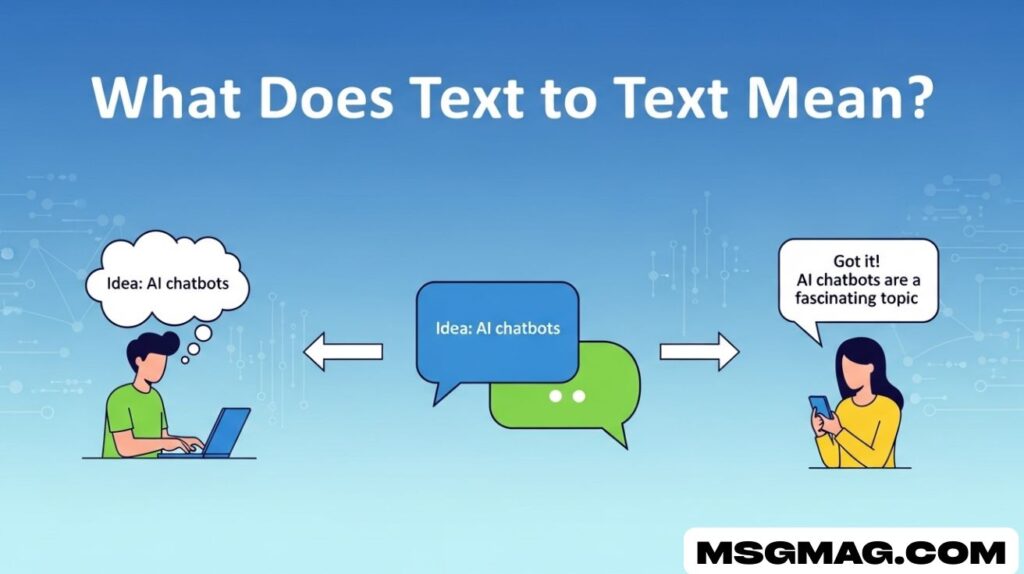
Movies, TV shows, and comics often reference previous works, demonstrating intertextuality and literary text connections. Fans enjoy spotting these easter eggs, which create a richer experience. Understanding these connections improves students’ ability to recognize recurring themes and character archetypes across stories.
Even fanfiction and crossovers rely on making connections between texts. By exploring these links, students learn to analyze how writers adapt ideas for new contexts, enhancing text-to-text comprehension and inspiring creative writing. Pop culture is a practical way to apply text analysis outside traditional classrooms.
Enhancing Critical Reading Skills Through Text-to-Text
Engaging in text-to-text analysis strengthens critical reading skills, helping students evaluate similarities, differences, and author intentions. Comparing characters’ decisions or story themes improves understanding and develops analytical thinking. Readers become more attentive to subtle details in plots and writing style.
Additionally, textual analysis skills gained from these exercises transfer to professional and academic contexts. Students learn to compare reports, research articles, or case studies efficiently. These connections encourage reflective thinking, synthesis of information, and a more comprehensive grasp of how content relates across disciplines.
Text-to-Text Applications in Technology and AI
AI text-to-text models transform input text into summaries, translations, or answers, demonstrating a computational form of text-to-text comprehension. These models help students understand relationships between content, as they compare input and output for meaning, context, and accuracy.
Moreover, technology encourages digital content analysis and inter-document connectivity skills. Students can explore how AI tools summarize articles or generate new content, learning to evaluate reliability and connections. This knowledge prepares learners for a world where digital literacy and text analysis are essential.
Avoiding Common Mistakes in Text-to-Text Analysis
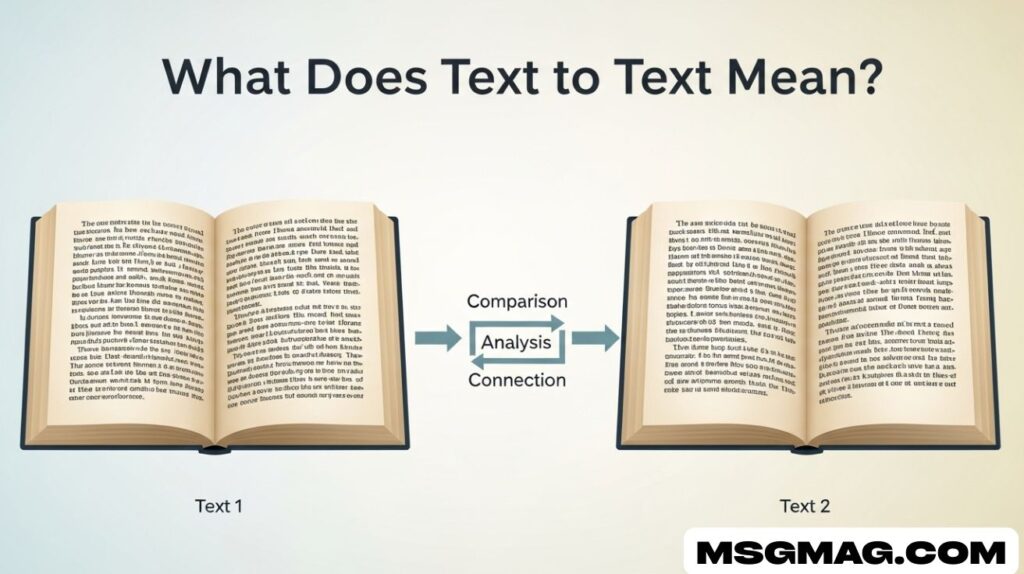
A common error in text-to-text analysis is assuming only similar formats can be compared. Books, songs, tweets, and videos can all have meaningful connections. Recognizing comparative text analysis across different media improves comprehension and creativity.
Another misunderstanding is confusing text connections with plagiarism. Text-to-text connections focus on analysis, interpretation, and commentary, not copying. Students who practice ethical and thoughtful connections build stronger reading comprehension techniques, enhance critical thinking, and develop skills that are valuable in academic and professional settings.
FAQs
What is an example of text-to-text?
Comparing the themes of courage in Harry Potter and Percy Jackson is an example of text-to-text.
What are the 4 types of text connections?
The four types are text-to-text, text-to-self, text-to-world, and text-to-media.
Why is text-to-text important?
It enhances critical thinking, comprehension, and understanding of relationships between different texts.
What is the difference between text-to-text and text-to-self connection?
Text-to-text compares two texts, while text-to-self relates a text to your personal experiences.
Conclusion
Understanding text to text meaning and mastering text-to-text analysis opens up a world of richer comprehension and creativity. Whether students are making text-to-self connections in a novel, identifying text-to-text connections across movies, or analyzing content online, these skills enhance critical reading skills, pattern recognition, and engagement with information.
In classrooms, professional environments, pop culture, and digital media, being able to draw insightful literary text connections transforms how we read, learn, and interact with content. In a world defined by connectivity, mastering text-to-text comprehension is more valuable than ever for students and lifelong learners alike.

